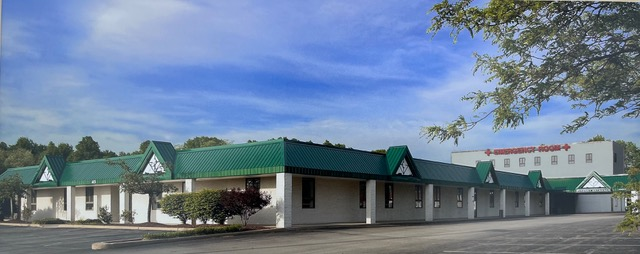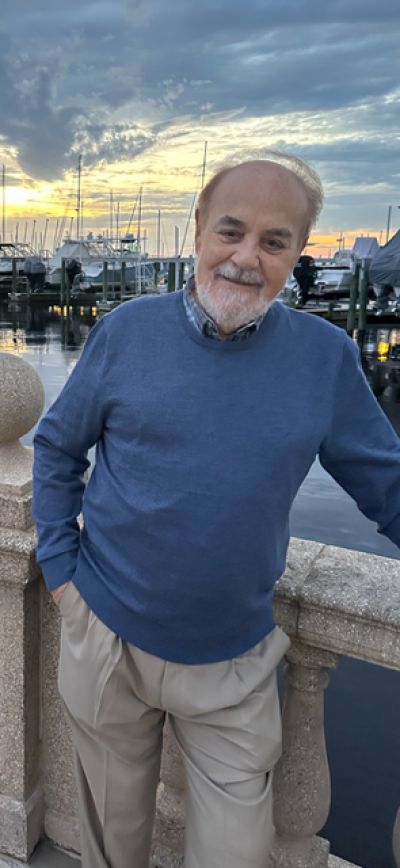With just a high school diploma, a few semesters of business school, and a real estate license, James M. Conti has helped change surgical healthcare in the U.S. and overseas. Never a doctor or medical practitioner, Conti’s recovery from an injury he suffered while serving in the U.S. Navy during the Vietnam War and combined experiences set him on a path of entrepreneurship in the medical field where his innovative promotion of ambulatory surgery, commonly called outpatient surgery, has benefited patients, physicians, and healthcare systems. For good reason, his name is associated with breaking ground regionally in this field.
La Gazzetta Italiana (LG): We appreciate this opportunity to learn about you and your professional contributions. To begin, can you let our readers know about your Italian roots and where you were raised?
James M. Conti (JMC): My father Lawrence A. Conti, Sr., was born in New Castle, PA. His father, Gabriele Conti was born in Statigliano, a municipality in the Province of Caserta, Italy, about 31 miles north of Naples. My father spent childhood years in Statigliano, before returning to the U.S. I was born in New Castle, too. In the 1990’s, on two occasions my father and I visited my paternal grandfather’s home in Statigliano. Currently, I reside in a suburb of Youngstown.
LG: What drew Italians to New Castle?
JMC: U.S. Steel had mills there. Many ethnic groups immigrated to the city to work in heavy industry. New Castle produced pottery then, too.
In 1950, I was enrolled at Saint Vitus School, New Castle, whose faculty counted many Italian priests and nuns. So my appreciation of native born Italians began at a noticeably young age.
LG: What was your early work experience?.
JMC: Before joining the U. S. Navy, I picked up skills in the Civil Air Patrol. It was the time of the Vietnam War. In boot camp I was appointed as Recruit Chief Petty Officer where I oversaw a company of 80 men. Following Naval Avionics School training I was unfortunately injured and transferred to the Naval Hospital in Philadelphia. When I was well enough, my duties there included transporting injured military personal to and from their surgeries and other treatment procedures. My heart went out to those men, many of whom were in bad shape. I saw hundreds of wounded guys a day while performing hospital duties.
LG: Those duties must have left an extraordinarily strong impression on you.
JMC: They did. My later work with developing medical centers may have taken root from experiences at the Naval Hospital. After being honorably discharged, I found work at WKBN in Youngstown, thanks to a brother who was a program director there. I became a radio and television broadcast engineer. I also attended Youngstown University under the GI Bill, where I majored in Industrial Management and Business Administration,
LG: Your name is associated with outpatient surgery facilities, but you’re not a physician.
JMC: In 1968, I envisioned a medical facility devoted to minor surgery and shared my concept with my close friend David Beede, whose father was a physician. Unknown to me, the concept of ambulatory surgery had begun to gain support in other parts of the country. My initial focus was in the Youngstown area. In 1969, while employed by the Shutrump Company as a leasing agent, I earned my real estate license. At the time, Shutrump was developing office buildings in the suburbs away from the centrally located hospitals. The projects included doctor offices. I leased the office complexes he built in Boardman and Austintown, OH. Shutrump would direct doctors to me, and I would help them design the office interiors.
I heard from doctors that they wanted a small room outfitted with surgical lighting to be incorporated into their offices. They needed to offer their patients a way to avoid undergoing long waiting times and overnight stays for minor surgeries at the hospitals where their surgery appointments could be “bumped” at any time.
This was especially true for podiatrists, who were often denied hospital privileges and forced to perform surgical procedures in substandard conditions at their offices, often using injectable pain medication without general anesthesia and under limited infection control procedures. I learned from physicians at the hospitals that there were many surgeons competing for limited operating room time. The less serious cases were often canceled and rescheduled. Meanwhile, the patient was confined to their hospital room waiting, sometimes for a week, for an opening in the operating room. I quickly understood the need for a dedicated, free-standing surgery center and envisioned its benefits.
In 1969, I left Shutrump Co. and formed a partnership to develop and own Crestwood Center an office complex in Austintown. With other investors I purchased the adjacent land and promoted “Coming Soon: Austintown Ambulatory Surgery Center.” It wasn’t until 1979 that the Ohio Department of Health approved the freestanding ambulatory surgery and emergency rooms, the first in the state unaffiliated with a hospital. Following approval by Ohio, I was requested by Dr. David Jackson, then Director for the Ohio Department of Health, to co-chair a task force to promulgate the Ohio rules for freestanding outpatient surgery and urgent care centers. I was also a founding member of the Southwest Surgery Center, located in Berea, OH. I designed centers in Akron, Youngstown, Columbus, and Pittsburgh.
LG: You convinced the appropriate healthcare officials of the benefits. And from there?
JMC: In 1982, I worked with the Secretary of Health and Human Services in Washington, DC. to negotiate a national reimbursement for freestanding ambulatory surgery centers. That year I was granted the first reimbursement provider number for Medicare. In 1983, I went on to form a national company and partnered in 1984 with Saint Vincent Hospital in Erie, PA and was granted the first ambulatory surgery center approval in Pennsylvania. The next year, I entered another partnership, this time with Saint Francis Hospital in Pittsburgh to design an ambulatory surgical center in nearby Cranberry township.
LG: What was your work in promoting and designing outpatient surgery centers overseas?
JMC: Dr. Goran Hellers, a prominent physician working on behalf of the city of Stockholm, Sweden, visited my company. He requested that I perform a comprehensive study in Stockholm to promote outpatient care for a population of one million. Not long after that, I gave a presentation to the First European Congress on Ambulatory Surgery in Brussels, Belgium, which catapulted my consulting activities to France, Russia, and the Cayman Islands, as well as to other countries.
LG: Worldwide interest in ambulatory surgery was really growing.
JMC: Following the U.S. Government’s approval for reimbursement under the Medicare program, freestanding ambulatory surgery centers exploded in number. This included hospital, corporation, and privately owned hospital facilities.
LG: We’ve read that you spent time in Italy as a healthcare consultant.
JMC: Following my attendance at the Brussels event, a physician from the Ospedale Pediatrico Bambino Gesu, a children’s hospital owned and operated by the Vatican, requested my assistance in planning ambulatory care for the facility. Along with my professional staff I lived in Rome for six months providing our consulting services free of charge as a gift to the Holy See.
LG: That was quite an honor.
JMC: Yes, as an Italian American it moved me to offer this hospital my expertise in an area I helped innovate.
LG: To what do you attribute this record of achievements in healthcare?
JMC: I feel my success in business is due to my Italian background along with the love and steadfast support I have received from my family. I hope to be an inspiration to all that follow me.




